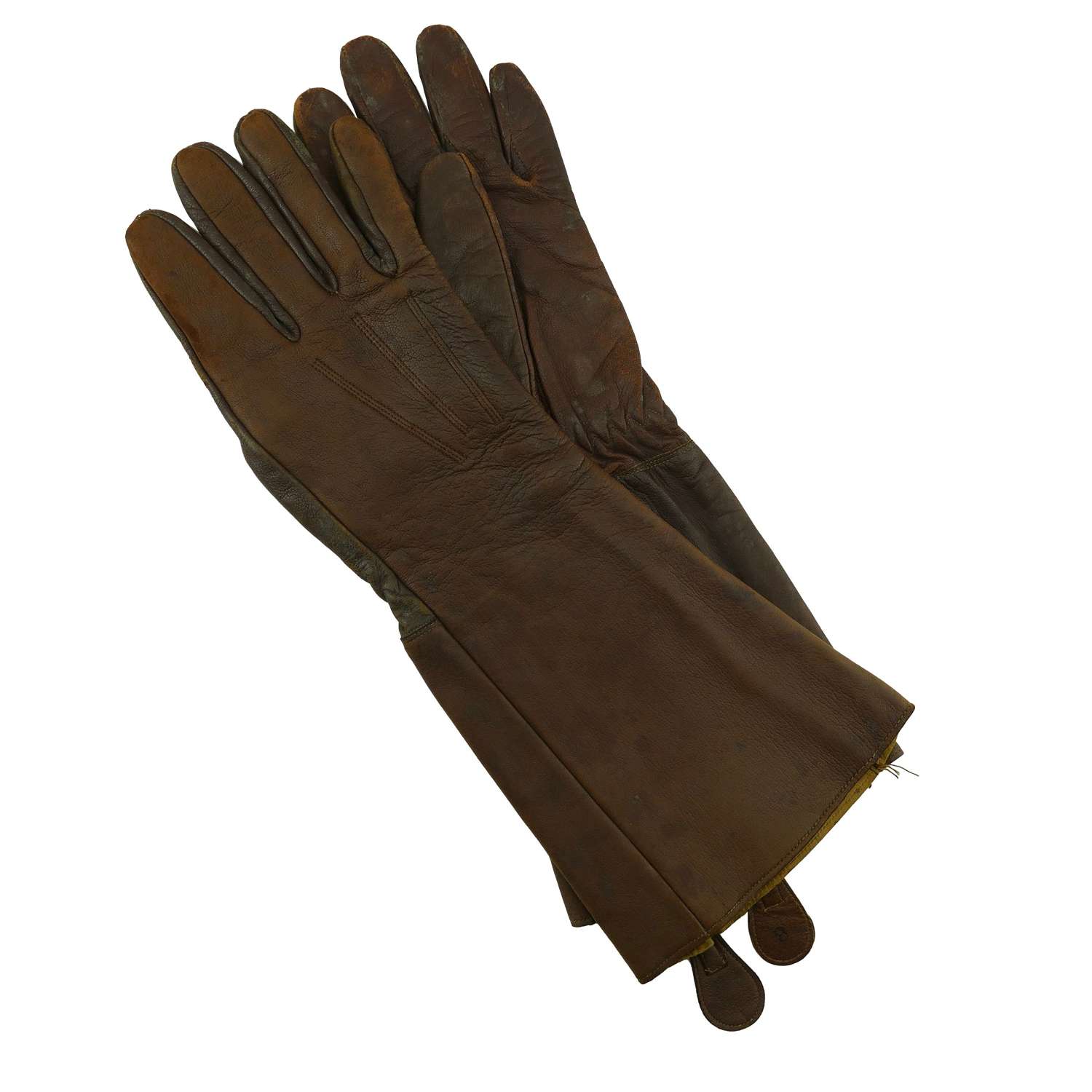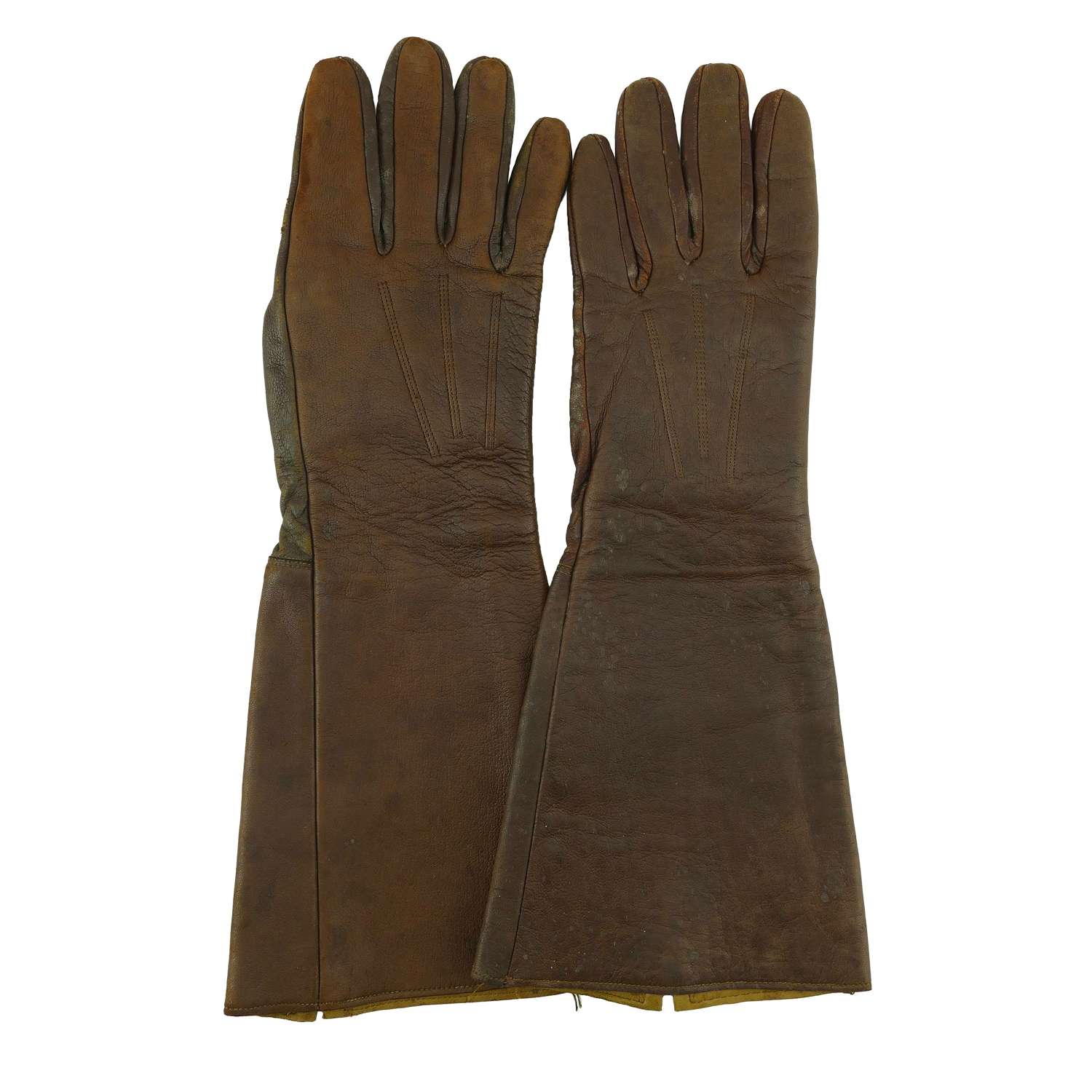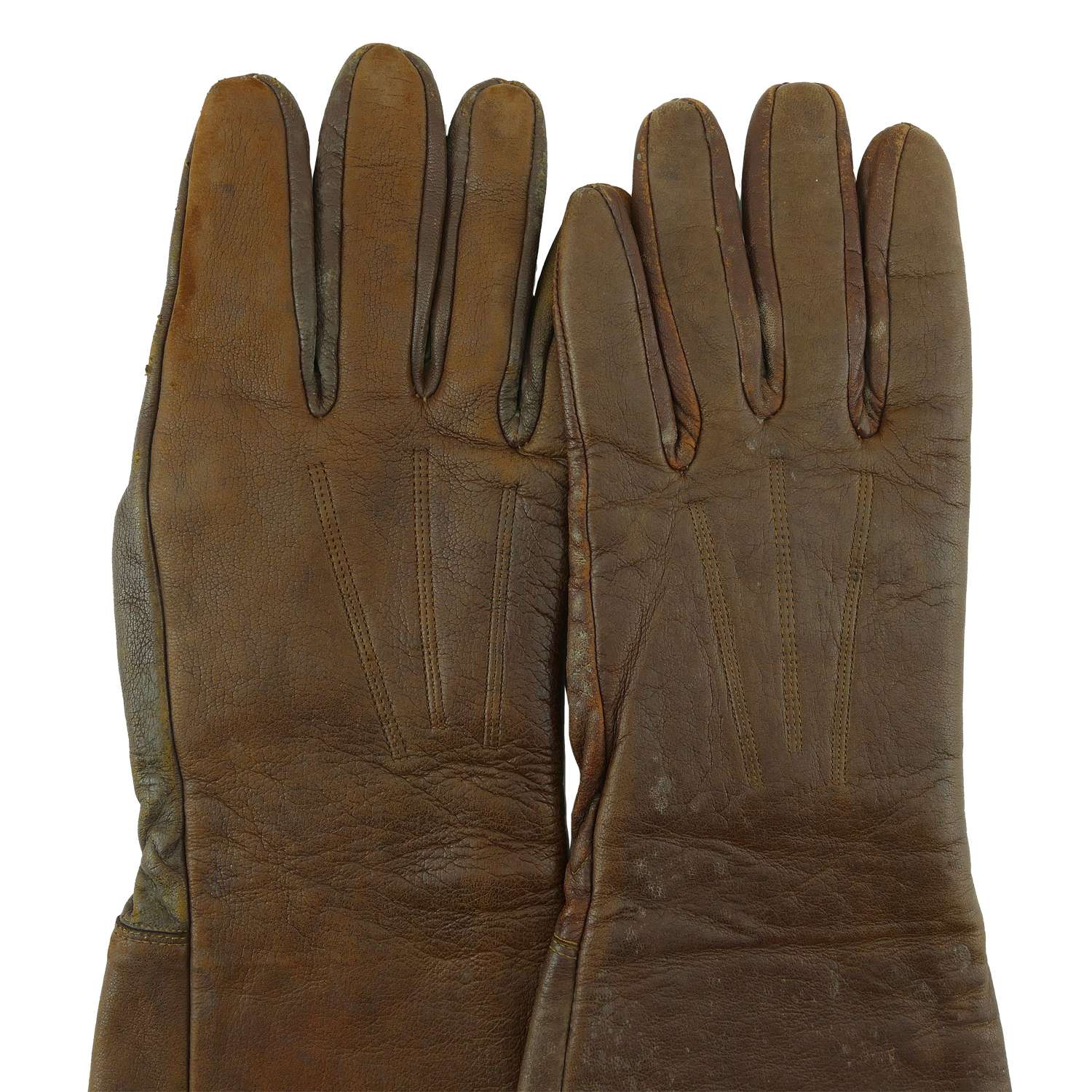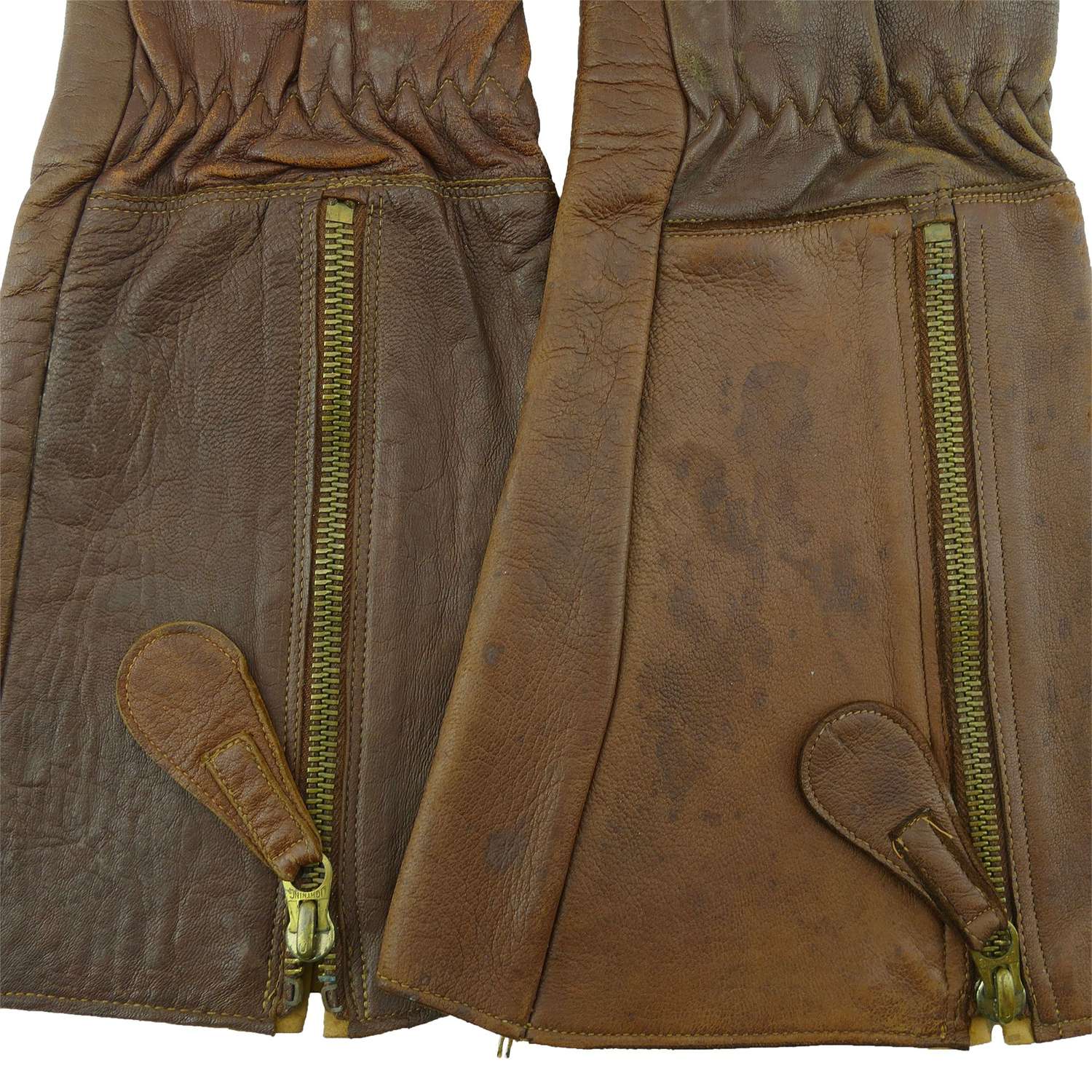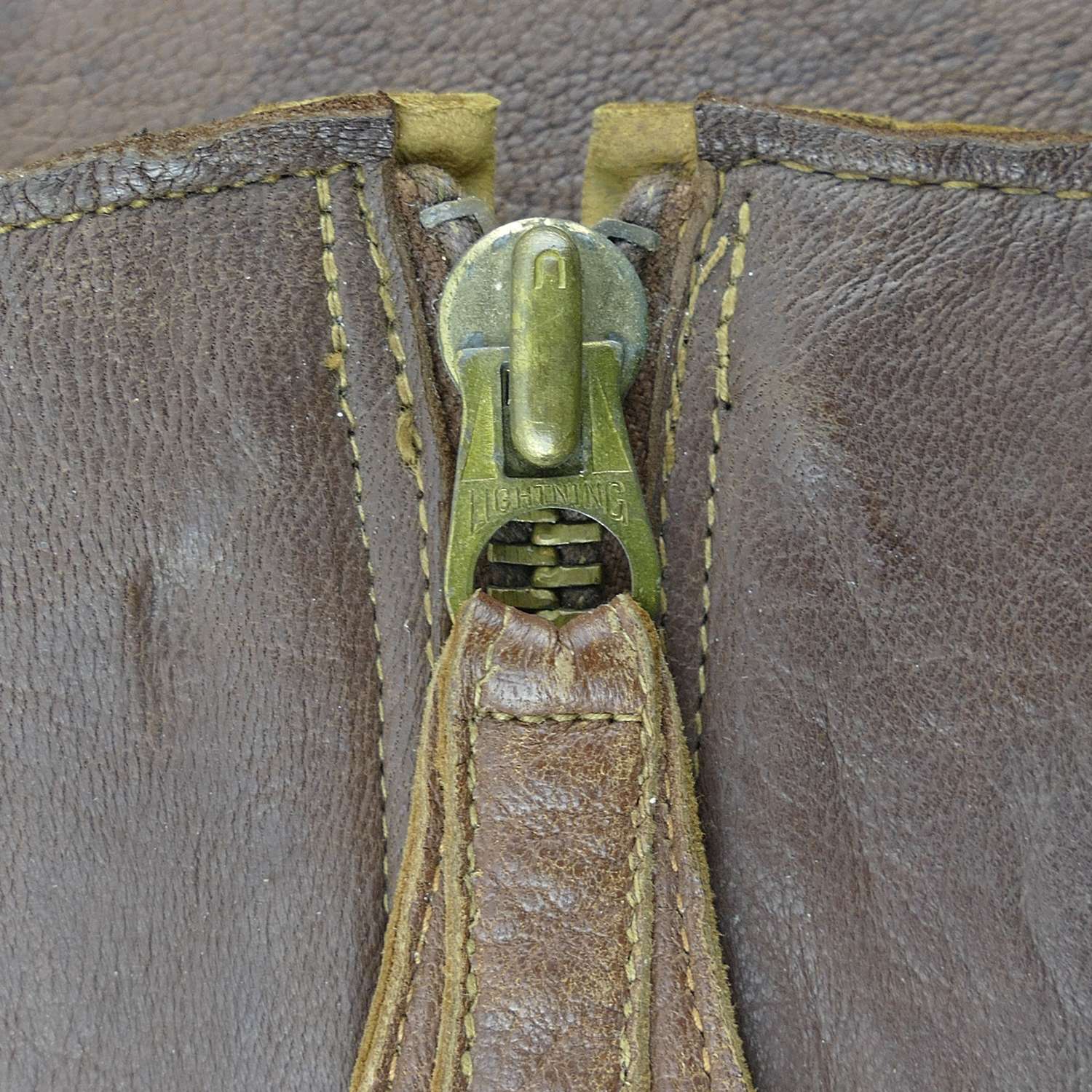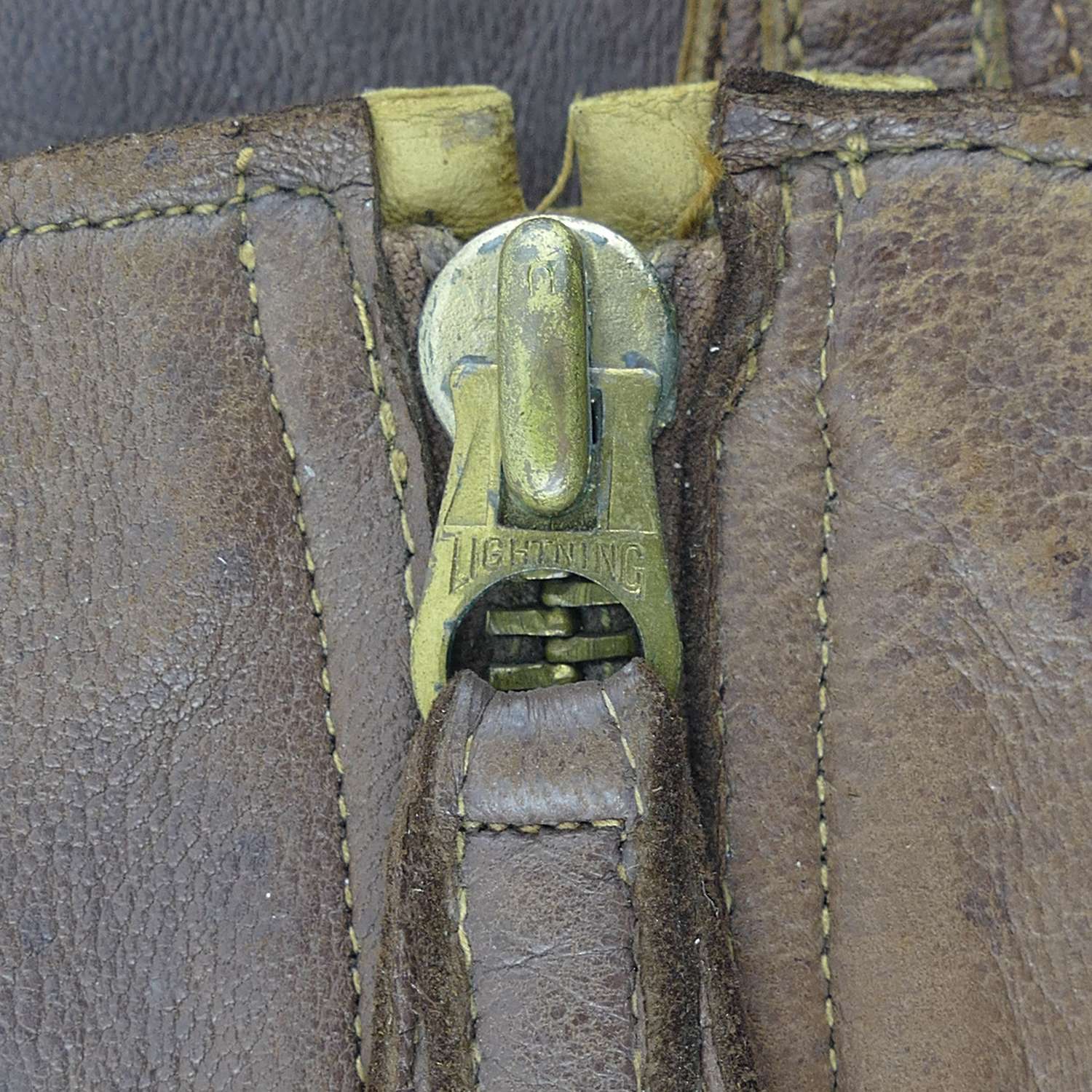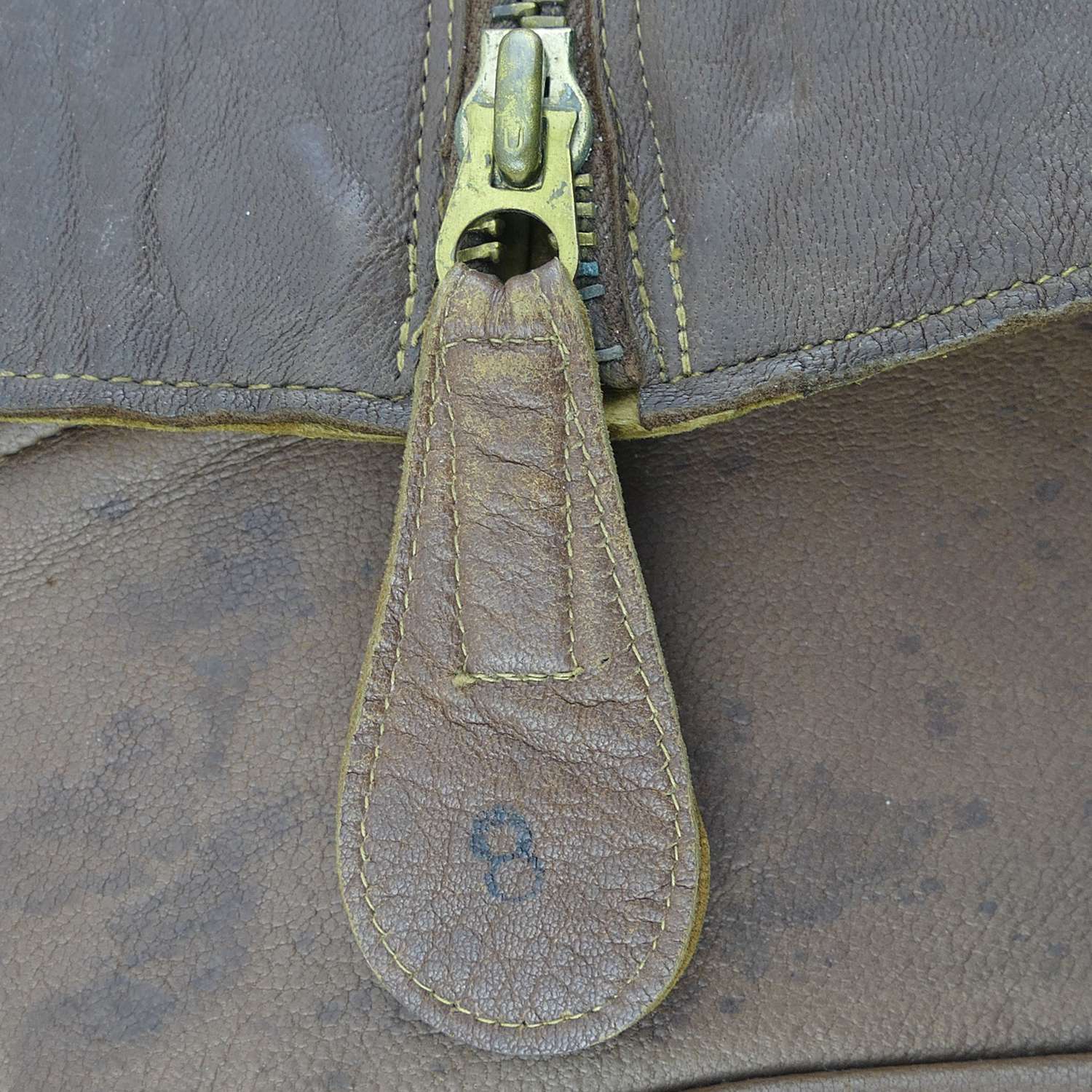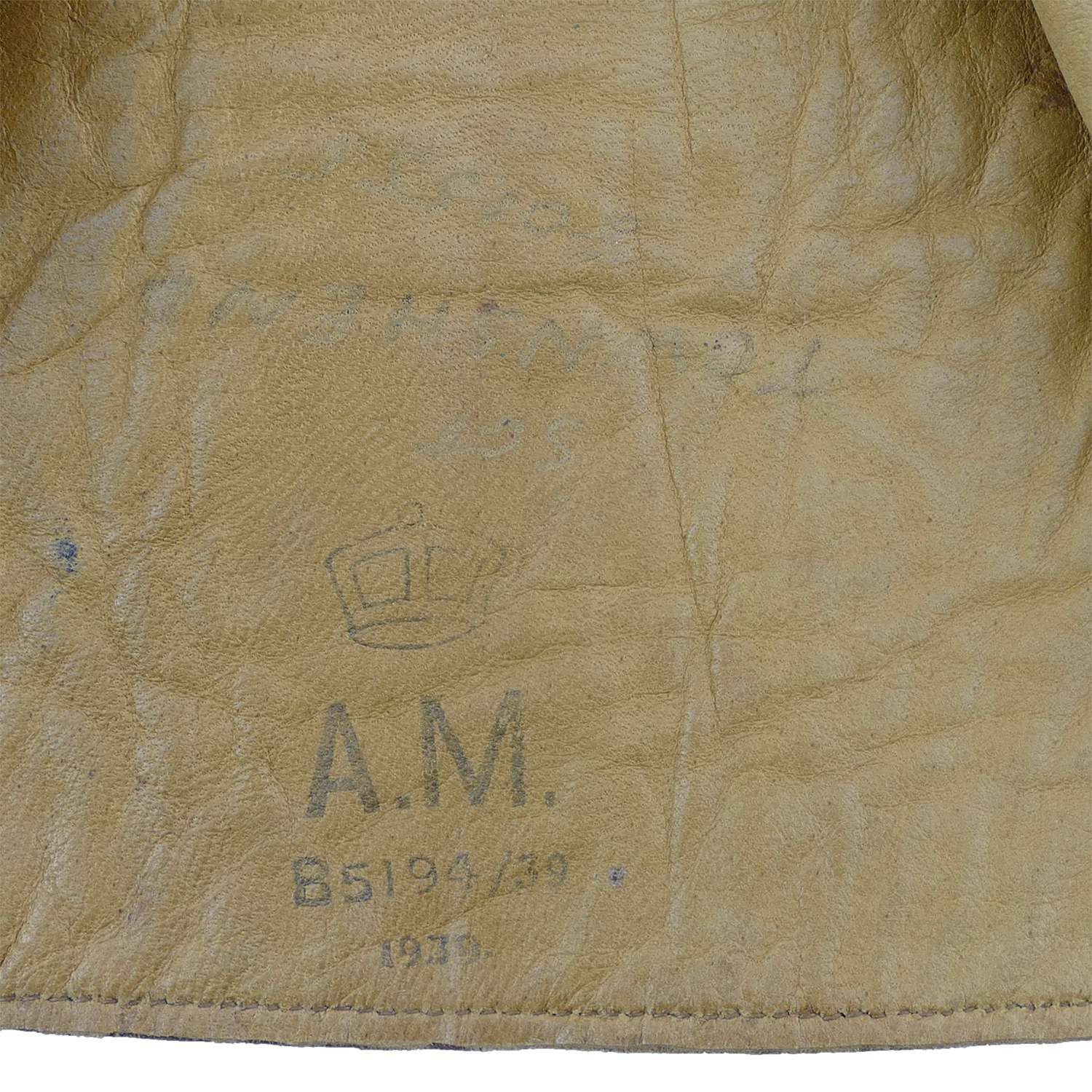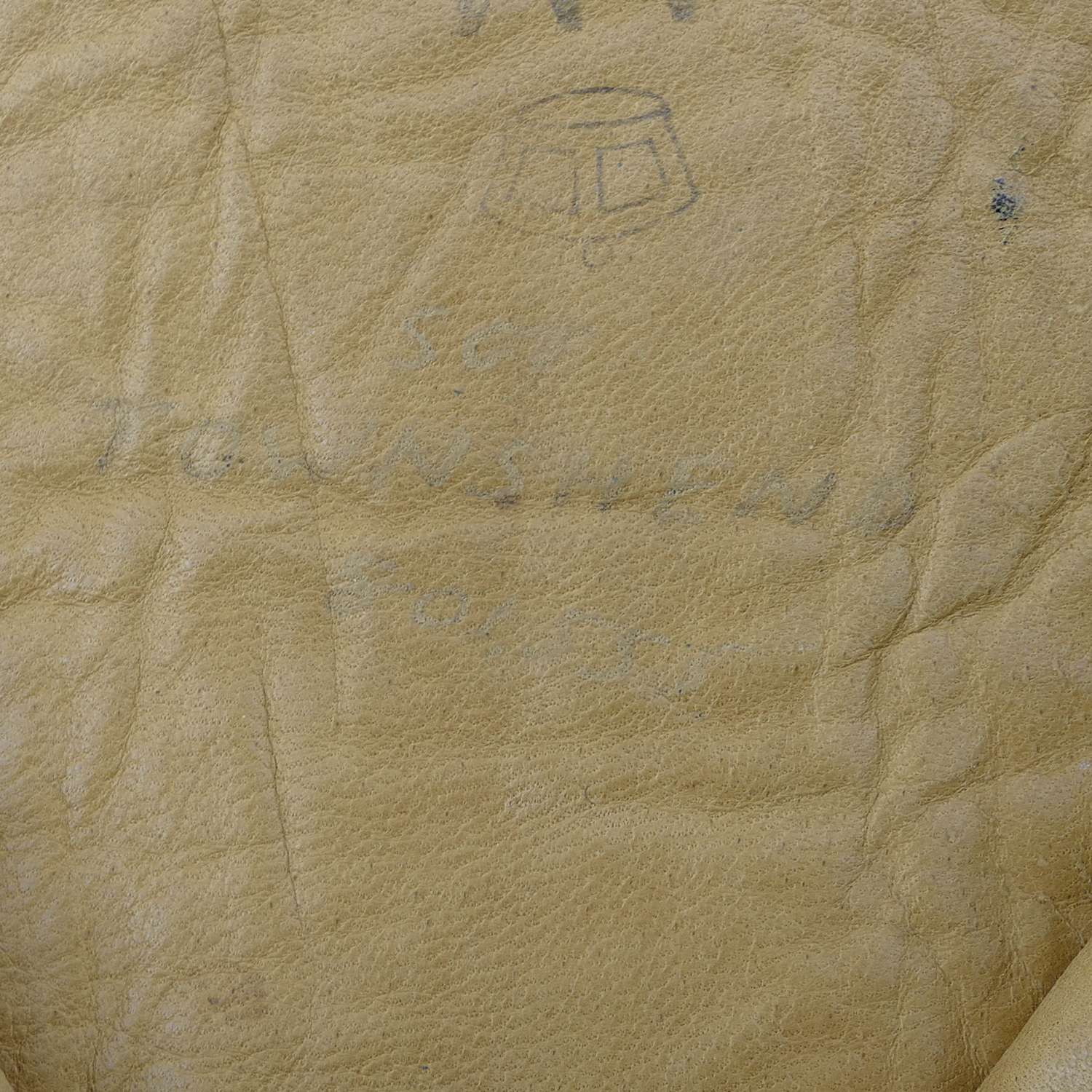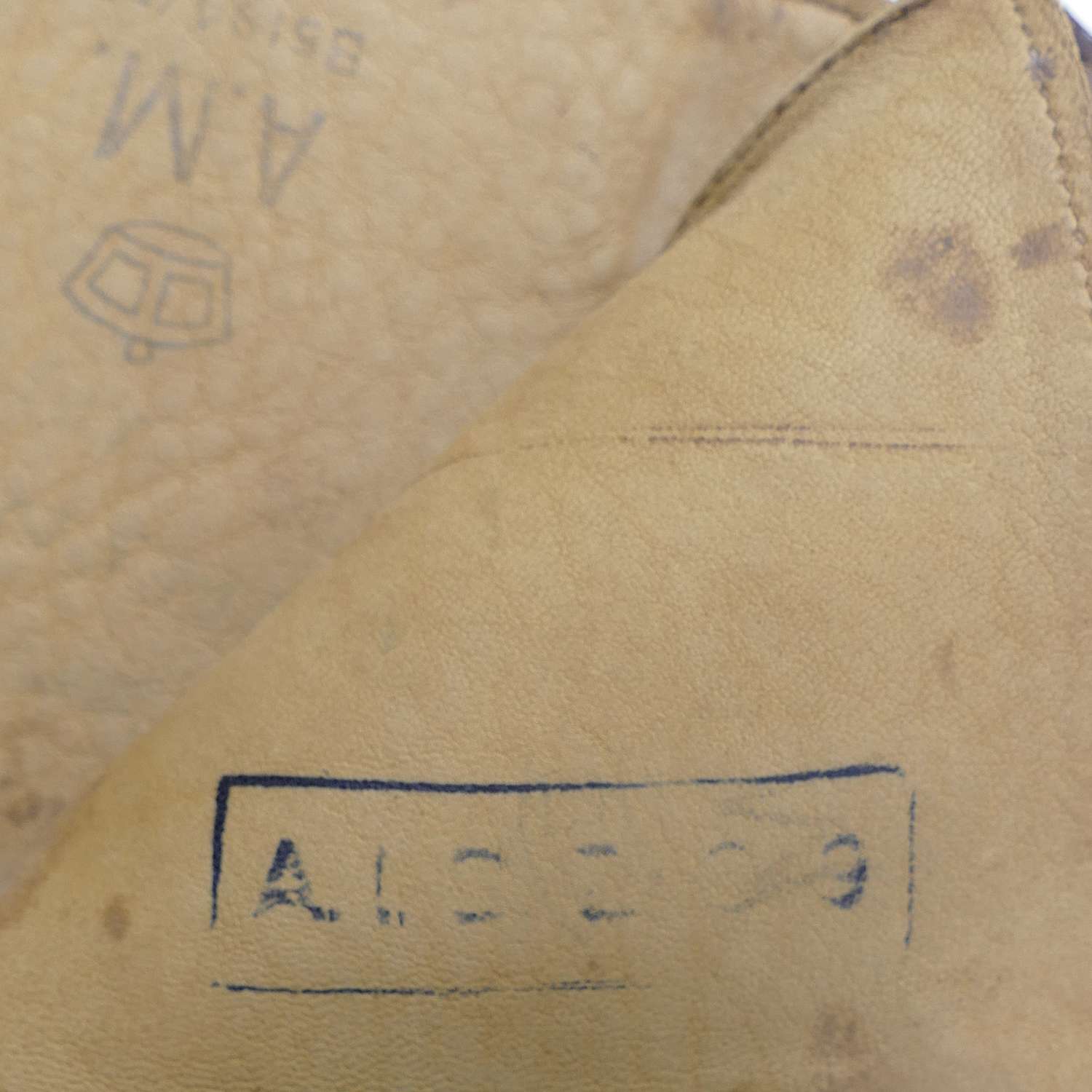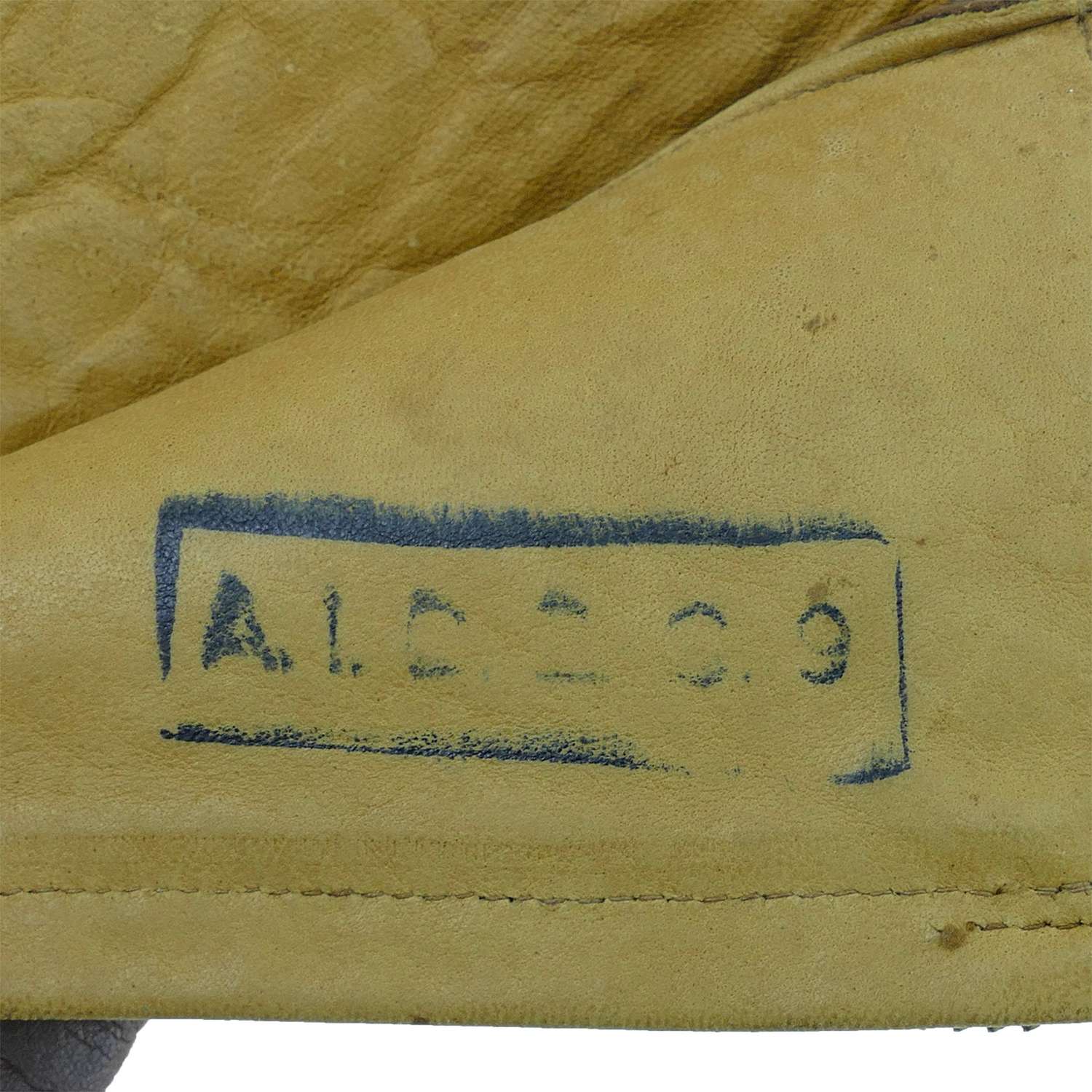
Email: david@historicflyingclothing.com
Web site: https://www.historicflyingclothing.com/
 |
Tel: 01332 345729 Email: david@historicflyingclothing.com Web site: https://www.historicflyingclothing.com/ |
|
Code: GA26972
Gauntlets, Flying, 1933 Pattern. Stores reference 22c/264/270, size 8/81/2. The leather is generally in very good supple condition, although a bit soiled with some wear and use, mainly on the fingers. The colour match is pretty good, with a slightly 2-tone finish to each glove. Both original brass 'Lightning' brand zips are in good working condition and retain original leather puller tabs. One tab is marked '8', the other '81/2' but size difference is negligible and they have clearly been worn as a pair. Each glove has Air Ministry King's crown and A.I.D. marks plus 1939 dates. In addition each is faintly named to 'SGT TOWNSHEND, 801555'. Thomas William Townshend was born in Edmonton, Middlesex on 31st May 1918. He was educated at St. James Church of England School (now St John & St James Church of England School) and went on to join the Auxiliary Air Force as an Aircraftsman with 601 Squadron. At the outbreak of war he was recalled for service and trained as an Air Gunner on Blenheims with 601. In May 1940 Townshend joined 600 Squadron where he remained throughout the Battle of Britain. Townshend shot down a Me110 on 14 August 1940 during a very unusual incident. The enemy aircraft, part of Erprobungsgruppe 210, a specialist fighter-bomber unit, had been instructed to attack both Ramsgate and Manston airfields. In the end only Manston was attacked, where Townshend and an armourer had been detailed to man some airfield guns fitted with 'homemade' anti-aircraft weapons consisting of four .303 Browning machine guns, possibly modified from a Blenheim 'under-fuselage' pack. During an interview, transcribed in 'Bombsights Over England, A History of Eprobungsgruppe 210' by John J Vasco (ISBN 978-0951573709), Townshend recalled:
"I grabbed the mounting with the four Brownings fixed to it and had the leader of the nearest formation to me in my sights. Both lines of the formation swept past between myself and the hangars. They were that close that I still think today that I could have thrown a stone and hit one or other of them. As it was, I opened fire and to my utter amazement watched a row of bullet holes ripping through the port wing right along the aileron section, the bullet holes travelling towards the fuselage.
The formation was pulling out at just above hangar height. This particular Me110 rolled slightly, never pulled out, and went straight in, I would say about fifty to seventy five yards from my position. At the same time the Bofors guns were firing away and between my watching the one I was going for, the leader of the starboard formation of Me110s broke in two at where the Gunner/Radio Operator sat. This happened just over the hangar which had been hit.
I think I can say I witnessed the most amazing escape I was ever to see throughout my war service. As the aircraft broke in two a body shot out horizontally and a parachute opened. How, I would never know because it was impossible for this gunner to have opened it. The 'chute opened that fraction of a second long enough for him to save his life as he fell to the ground in front of the remains of one of the hangars. The forward portion of the aircraft hit the ground and scattered bits and pieces all over the 'drome. This I would say was a definite Bofors gun hit.
I had fired in the region of 250-300 rounds."
Townshend was later posted to Bomber Command, completing two tours with 57 Squadron before another posting to 201 Squadron at Pembroke Dock on Sunderlands. He left the RAF shortly after the war and emigrated to South Africa in 1948 where he died in 2013.
A good '+' / very good pair of gloves to a Battle of Britain airman. Needless to say, any kit related to the Battle of Britain is extremely rare and sought after. Stock code GA26972.
